Lessons Learned After 250 Documentary Photography Assignments
![]()
Recently I hit a milestone in my photographer’s career: I’ve accomplished 250 paid assignments. It took me ten years and half a million frames to get there. I thought it’s a decent reason to reflect a little bit on what has been done and what the journey feels like.
The A-ha Moment
Just a few months ago I was on an assignment together with a seasoned fundraiser who has worked for many years with my pictures. One phrase she said became the most important insight of all my career: “Do you know that some of your images brought in up to a million dollars in donations?”
This struck me. For me, this became a justification of all my breakdowns, doubts, fears, struggles and sleepless nights after emotional shoots. When I decided to become a humanitarian photographer, I wanted my pictures to make a difference for real people, and it turns out, they do.
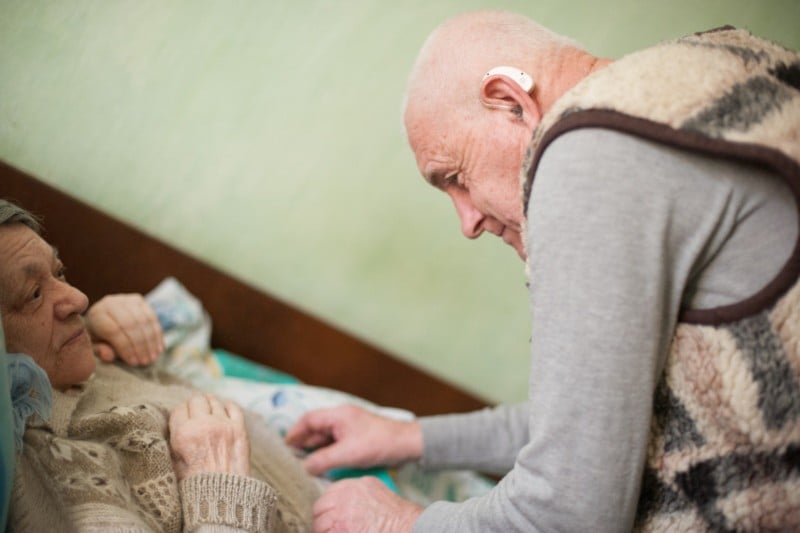
After a few initial years in “pure” photojournalism at the dawn of my life in photography, I realized that no matter how striking a story published in a regular newspaper or magazine is, it serves an informing or entertaining goal but almost never becomes a call to action.
It’s the opposite with humanitarian organizations’ media: all their publications are aimed to make people want to do something about the cause. This makes a whole lot of sense for me.
What’s the Most Joyful Part?
As a documentary photographer, I don’t stage things, so I love when a scene surprises me with natural emotions, colors, lines, spots, rhymes, and rhythms. A lot of my photo shoots take place in small and dark flats of the former Soviet Union, where you don’t expect any visual surprises.
Even in that environment, daily life sometimes gains the potential to be perfectly framed, and a rectangle in front of my viewfinder obtains multiple meanings, multiple layers. When I see this happening, I get excited. My heart starts racing.
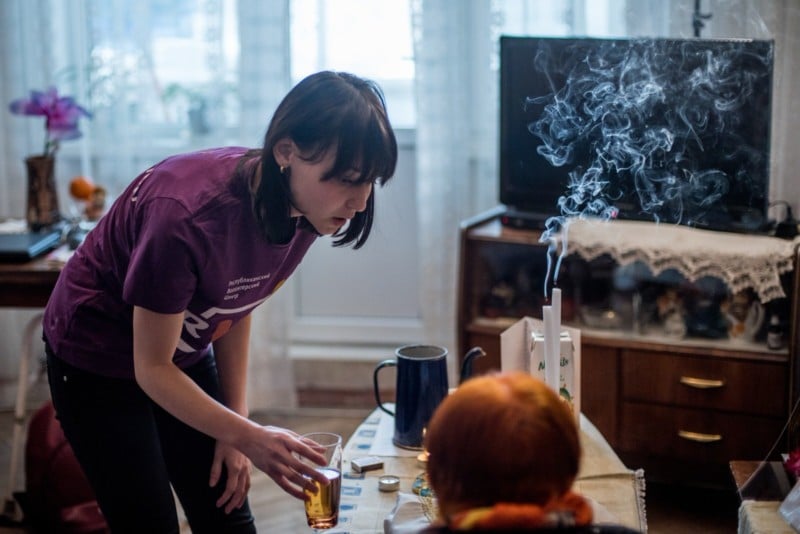
What’s the Hardest?
There’s a lot of bitterness in being a humanitarian photographer. The hardest photo shoot I’ve ever had so far was in war-torn Ukraine. I saw bombed residential buildings in Mariupol, which is my dad’s hometown.
I spoke to dozens of uprooted and desperate people. I saw a hospital near Slavyansk caught in a cross-fire with staff and patients inside. I remember taking pictures of this ruined hospital and whispering to myself: “Thank goodness I have a camera so I can concentrate on composition and exposure…”
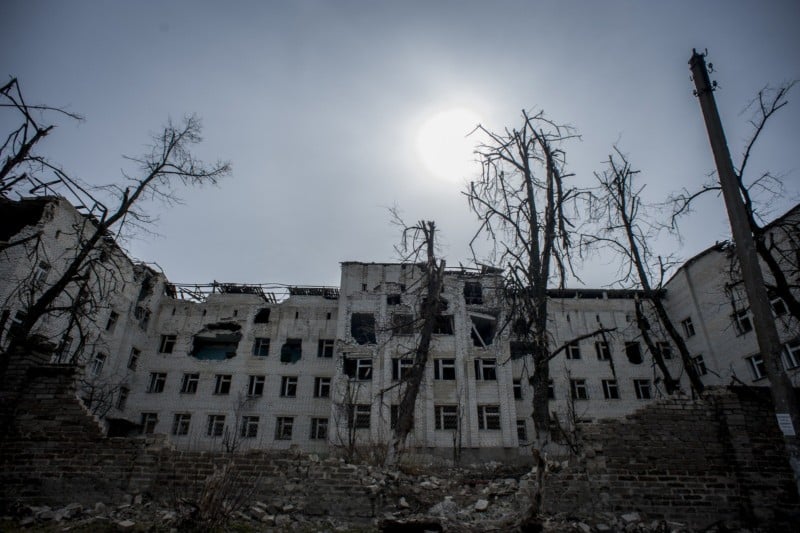
Walking into someone’s house, seeing terrible living conditions, and then leaving is hard. I always think: “I spent there an hour and I’m so depressed, and these people spend every day of their life there!”
Listening to the parents of disabled children is hard — to the point where I consider having healthy children a miracle. I’m scared to have more children now and I have a hard time trying to explain my fear to my wife.
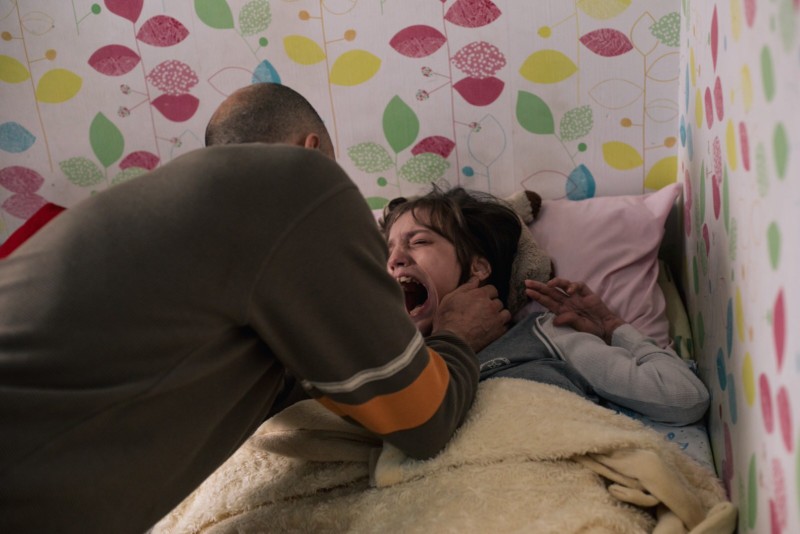
Finding out about the passing of those whom I recently photographed is hard.
Running into the stories of social injustice, indifference, neglect is hard.
Sometimes, after a day of a shoot, I feel too lucky. Undeservedly lucky.
I always get home heartbroken. Nevertheless, I always head to each assignment inspired and excited. I know that I’m doing a meaningful job, this lets me stay on top of my breakdowns.
What Are the Pitfalls?
I think my personal pitfall is my willingness to lift too much weight: when I make stills, film video, conduct an interview and translate it in real-time, I often feel overwhelmed. I can’t afford failure at any of my tasks, so I allocate all my abilities to get everything done, and then by the evening, I reach a hotel like a walking dead.
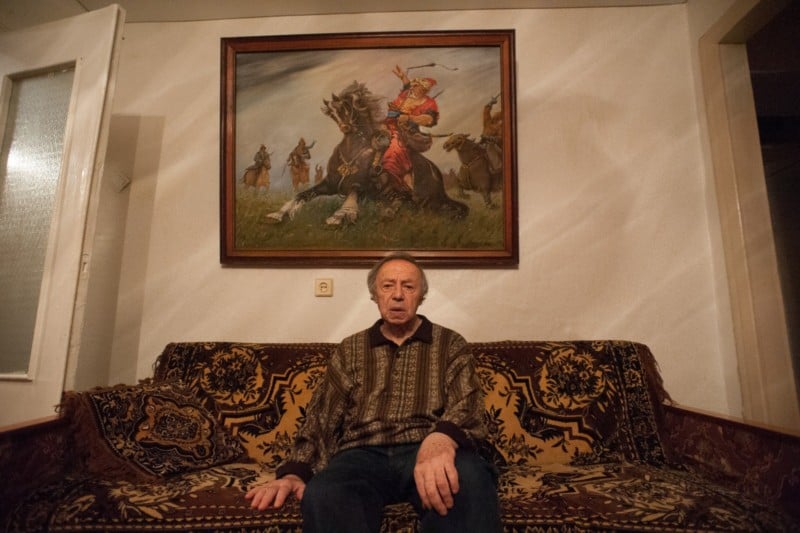
Pieces of Advice
I have set a number of strict rules for myself years ago which up to now were never written down. A lot of them are pretty far from the business of photography itself, but following them saved me more than once as a photographer, business person, and human being:
1. Prior to the shoot, get into the mindset of making the best job you’ve ever done;
2. Dignity is the key. It’s often being said that no frame deserves a photographer’s life. For me the same goes for dignity: no frame deserves humiliating your subject. In humanitarian photography, we constantly deal with vulnerable people living through their hardest times. You don’t want to exploit them and their condition, even though you know that their tears in the frame will raise money for them.
On one of my first humanitarian photography assignments, I was asked by the local staff to not upset the clients. It was an unusual request. Turned out another photographer visited that place before me, and they intentionally made subjects cry for the sake of a “good picture”. Everyone who worked with me knows that I have a dignity rule in place and such a thing would never occur on my visit.
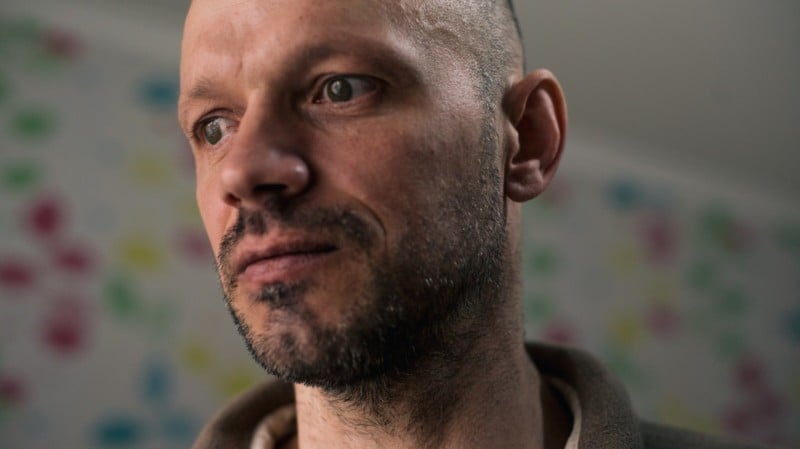
Sometimes it’s appropriate to take a picture and sometimes absolutely not. How do you find out? Simply stay human, don’t turn yourself into a cynical picture-taking robot. After you leave, the subject should feel respected, taken care of, dignified, and not embarrassed, confused and upset.
- Listen to your customers. Better don’t assume that you know what they are looking for when they send you on an assignment. It’s your job to make sure that you are on the same page. Getting into fine details of their requirements will help you understand the overall approach. The stakes are high in humanitarian photography: we are dealing with disaster relief, with helping people who rely heavily on humanitarian assistance;
- Find out everything beforehand about the people you’re going to meet;
- Write a list of equipment to take with you;
- Have basic medicines with you at all times. Running nose or a sudden onset of fever in the middle of a shoot day is the worst that can happen. It happened to me a lot, so I have a kit of strong medicines with me wherever I go. I also take a course of multivitamins before I set out to shoot in another corner of the world.
- Print out hard copies of all the essential information: contact details in the field, flights, hotels, local emergency numbers;
- Secure a local SIM card and local cash;
- This one is very important: every morning before leaving for a shoot, switch on every piece of equipment and make a test. I tend to do myself a favor and take a selfie as a test;
- Pay attention to clothes. I’m not good at dressing up fancy, but I do dress appropriately and neat. I need to feel comfortable in my clothes, however. My working day consists of car travels, fast freezing (or sweating) walks with gear on my shoulders, climbing up the stairs, working in hot and choking flats. I don’t want to sweat too much and to freeze too much, so proper dressing sometimes turns into a challenge.
- Look nice. My supervisor at the American Joint Jewish Distribution Committee (JDC) told me before my very first assignment: “Remember that for those whom you are filming you are the face of JDC, they don’t care whether you’re a freelancer or a staff member.” I’ve learned this and always keep it in mind. I tend to visit a hairdresser a few days before my assignment trips.
- Listen actively, but don’t produce any sounds. During a shoot or an interview stay in the moment, put aside all your other thoughts, even when you see your camera falling down from a desk (happened to me), even when something goes wrong with the equipment (happened, too). You don’t want to hassle with your camera in front of your subject. Have a backup camera ready, even if it’s a smartphone, and just keep rolling.
- Back up everything. Coming back to a hotel in the evening as walking dead, I know that there is a mandatory task awaiting me before I fall down senselessly on my bed: copy today’s files from the camera to the hard drive and then copy them to another hard drive. If I’m lucky enough to stay in a place with decent WiFi I also upload everything in a cloud. Dozens of people besides myself work hard to make these photo shoots happen, and repeating them is never an option. I keep this in mind.
- Don’t get lost in your deliverables. It’s all about a simple but cohesive and self-explanatory system of files and folders naming. Luckily I established this system from the very beginning, and now I easily find my pictures from ten years ago. When I import the pictures into Lightroom I also assign them with a few keywords, so whenever my clients need me to send them a selection like “Wintertime in Russia” I can provide it with ease. Labeling the best pictures in Lightroom also saves a lot of time in the long run.
- Lastly, an extremely important one: Be an accurate business person. That’s a whole large topic but essentially stay on top of accounting, contracts, and deadlines. Deliver more than expected, better than expected, faster than expected. I use Sprout Studio software for my business routine and exploit my natural passion and curiosity to get the pictures delivered very fast, in some cases even on the day of the shoot (photojournalistic background helps me here).
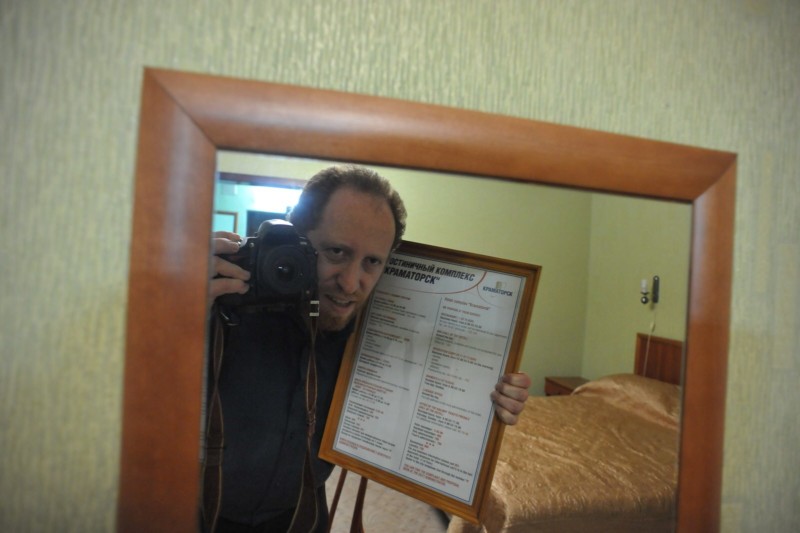
Overall, regardless of all the hardships of the profession, I’m living my dream. I consciously went into the humanitarian photography field, and I’m aiming to learn more lessons that I promise to share after I’m done with my 500th assignment!
About the author: Arik Shraga is a photojournalist and documentary photographer based near Jerusalem, Israel. The opinions expressed in this article are solely those of the author. You can find more of his work and connect with him through his website and LinkedIn. This article was also published here.